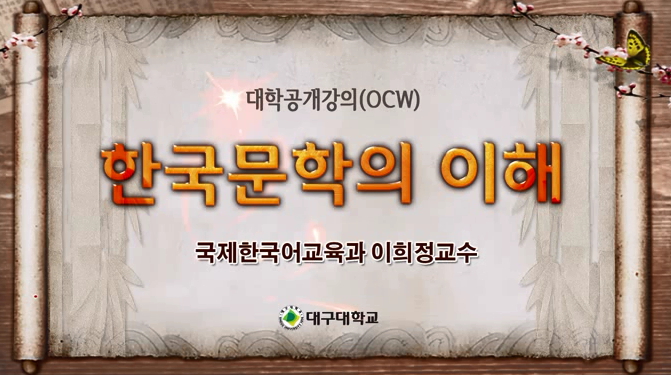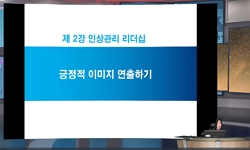This thesis organizes bibliographical points about 『Hanyang』, a general literary magazine published in Tokyo, Japan from the 1960’s to 80’s and presents the summary of contents analyzed briefly about it. Based on the entire contents contained ...
http://chineseinput.net/에서 pinyin(병음)방식으로 중국어를 변환할 수 있습니다.
변환된 중국어를 복사하여 사용하시면 됩니다.
- 中文 을 입력하시려면 zhongwen을 입력하시고 space를누르시면됩니다.
- 北京 을 입력하시려면 beijing을 입력하시고 space를 누르시면 됩니다.

1960~80년대 재일(在日) 종합문예지 『한양』 게재 문학작품의 서지적 연구 = A Bibliographical Study on Literary Works Issued in 『Hanyang』, a General Literary Magazine Published in Japan during the 1960’s to 80’s
한글로보기https://www.riss.kr/link?id=A107875301
- 저자
- 발행기관
- 학술지명
- 권호사항
-
발행연도
2021
-
작성언어
-
-
주제어
한양 ; 1960~80년대 ; 4월혁명 ; 한국문학 ; 재일조선인문학 ; 재일조선인 ; 문인간첩단사건 ; 현실주의 ; 참여문학 ; Hanyang ; from the 1960’s to 80’s ; April Revolution ; Korean literature ; Korean Japanese’s literature ; Korean Japanese ; Literary spies case ; realism ; participating literature
-
KDC
800
-
등재정보
KCI등재
-
자료형태
학술저널
- 발행기관 URL
-
수록면
47-78(32쪽)
- DOI식별코드
- 제공처
-
0
상세조회 -
0
다운로드
부가정보
다국어 초록 (Multilingual Abstract)
Literary works published in 『Hanyang』 are noteworthy as participating literature associated with Korea’s political or social circumstances either directly or indirectly. Also, about the directivity of topics or subjects, how they embodied their own identity or ethnic distinctiveness as Korean Japanese formed major topics or subjects. Particularly, unlike other Korean Japanese media released in Japan then, they used Korean, and with a wide range of writers that encompassed both conservatives and progressives, they did show not biased views supporting or criticizing certain ideology or national policy unilaterally but diversified standpoints in balanced voice. Therefore, 『Hanyang』 revealed not only the extension of discourse in Korean literature but holistic characteristics widening the generation identity of Korean Japanese all at the same time. In this sense, 『Hanyang』 is exceptionally meaningful in that it overcame political tension in Korean Japanese society that only reproduced ideologic stiffness resulted from division between South and North Korea just as it was and played pivotal roles in combining the ethnic identities of Chosun people living in both Korea and Japan.
This thesis organizes bibliographical points about 『Hanyang』, a general literary magazine published in Tokyo, Japan from the 1960’s to 80’s and presents the summary of contents analyzed briefly about it. Based on the entire contents contained in its first issue published in March, 1962 up to No. 177 of March, 1984, this author has checked all the works published in it including poems, novels, and critiques and arranged the genres and writers’ list systematically. According to the results, about poetry, 241 poets’ total 1,474 poems, about novels, 78 writers’ 372 novels, and about criticism, 65 critics’ 261 works are found in it. Among them, Korean literary persons are about 60%, and Korean Japanese are thought to form 40% or so; however, as of now, it is hard to verify the details of publishment or the trends of major writers of the time mostly, so this author deems that such distinguishment would not be much meaningful now.
Literary works published in 『Hanyang』 are noteworthy as participating literature associated with Korea’s political or social circumstances either directly or indirectly. Also, about the directivity of topics or subjects, how they embodied their own identity or ethnic distinctiveness as Korean Japanese formed major topics or subjects. Particularly, unlike other Korean Japanese media released in Japan then, they used Korean, and with a wide range of writers that encompassed both conservatives and progressives, they did show not biased views supporting or criticizing certain ideology or national policy unilaterally but diversified standpoints in balanced voice. Therefore, 『Hanyang』 revealed not only the extension of discourse in Korean literature but holistic characteristics widening the generation identity of Korean Japanese all at the same time. In this sense, 『Hanyang』 is exceptionally meaningful in that it overcame political tension in Korean Japanese society that only reproduced ideologic stiffness resulted from division between South and North Korea just as it was and played pivotal roles in combining the ethnic identities of Chosun people living in both Korea and Japan.
동일학술지(권/호) 다른 논문
-
- 한민족문화학회
- 장인수 ( Jang In-su )
- 2021
- KCI등재
-
- 한민족문화학회
- 엄경희 ( Eum Kyoung-hee )
- 2021
- KCI등재
-
재일조선인 혐오의 계보와 인권운동 -고마쓰가와 사건, 김희로 사건, 히타치 투쟁을 중심으로-
- 한민족문화학회
- 이영호 ( Lee Young-ho )
- 2021
- KCI등재
-
- 한민족문화학회
- 신광희 ( Shin Kwang-hee )
- 2021
- KCI등재




 KCI
KCI KISS
KISS






